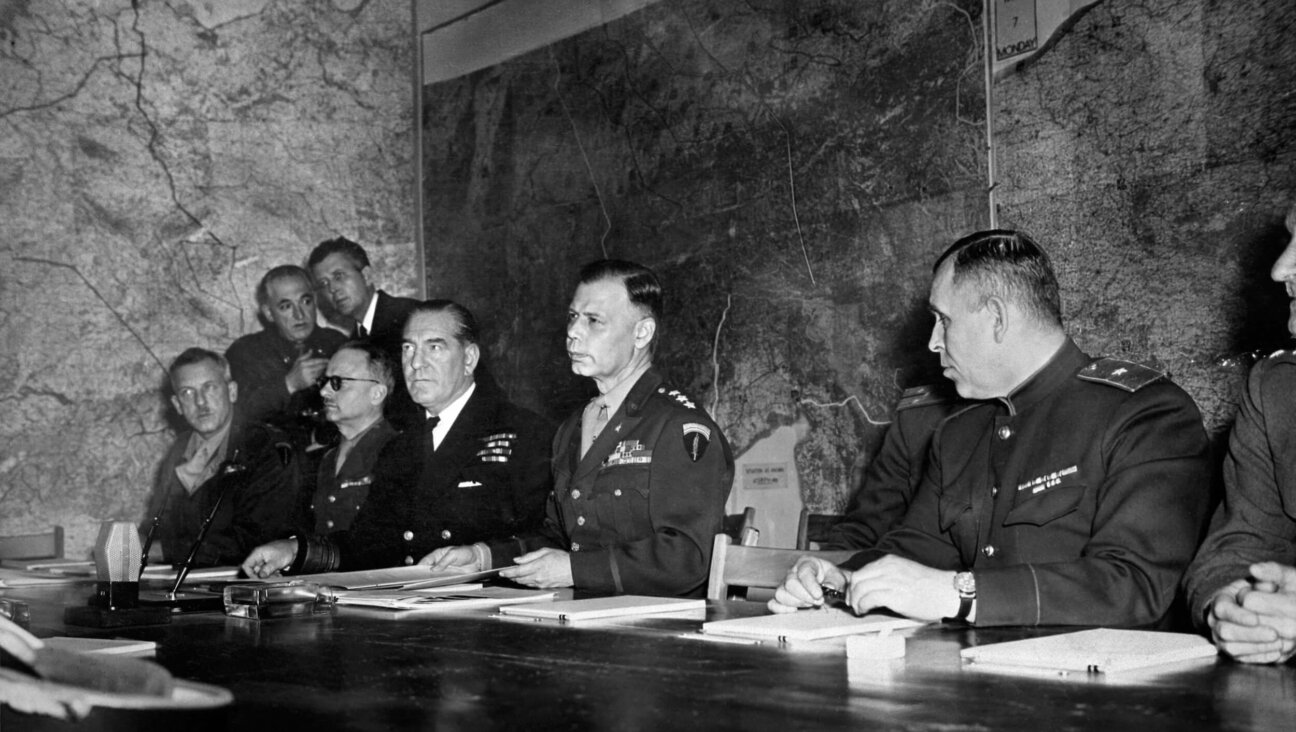A How Many State Solution?
The Gaza war ended with Hamas losing militarily but surviving politically. It is now clear that Hamas is here to stay in Gaza.
Hamas’s survival and the concomitant issue of delivering reconstruction aid to Gaza will probably provide the focus for the early months of new Mideast envoy George Mitchell’s mission. For broader undertakings, Mitchell will have to await Israel’s February 10 elections and the long weeks of coalition negotiations that follow.
Sometime around April, Mitchell will then confront a post-war reality of a new Israeli government as incapable (or uninterested) as its predecessors in making the painful sacrifices required for a solution, and not one but two Palestinian entities flanking Israel: a Palestinian Authority too weak to engage in serious state-building and a Hamas-run Gaza not on direct speaking terms with the P.A., Israel or the United States.
This emerging reality poses a serious challenge to traditional strategies for achieving a two-state solution to the Israeli-Palestinian conflict. In light of this state of affairs, a growing number of peace-seeking Israelis recognize the urgency of looking for alternative approaches that might afford an opportunity to manage or even partially solve the conflict in the foreseeable future. Many of the advocates of these alternative approaches are prominent Israelis who should be taken seriously. The list of proposals is intriguing, if not always compelling.
First, there is what might be called a “three-state solution”: Israel negotiates a peace deal or some sort of interim arrangement with the P.A. in the West Bank, and a long-term cease-fire, or hudna, with Hamas in Gaza. The best that can be achieved with Hamas is a hudna, because at least for now there is no chance for a peace accord and mutual recognition of sovereignty with the militant Islamist movement. An extended and stable cease-fire would be a big improvement over the current volatile situation. Hamas’s current conditions for a hudna are unreasonable and unacceptable to Israel; then again, so are the P.A.’s current conditions for a two-state solution. These are not reasons not to try.
This option is increasingly supported by Israelis who see no chance of restoring P.A. rule in Gaza. It will gain little traction, however, unless and until the Israeli and American governments begin speaking directly to Hamas — and Hamas agrees to negotiate directly with Israel.
An alternative to the three-state solution is the “Egyptian-Jordanian solution”: Egypt takes Gaza off our hands while Jordan takes over the 90-plus percent of the West Bank that we have offered but that the P.A. is too weak to accept. This is the retro pre-1967 solution.
This option appeals to right-wingers and others who have awoken to the Palestinian demographic threat but have no faith in the Palestinian capacity for state-building, now or in the future, and deem Jordan and Egypt to be far more reliable neighbors. The biggest problem with this idea is that Jordan and Egypt reject it out of hand: The Palestinians, they insist, are Israel’s problem, not theirs.
Egypt and Jordan (and Syria!) are candidates for another option that makes them even angrier. Egypt will cede the Palestinians territory in northeastern Sinai to enlarge the Gaza Strip and accommodate its burgeoning population. Israel will compensate Egypt with land in the southern Negev and a passage across or under it to link up with Jordan. In one variation, Jordan will cede land to Syria along their common border so Israel can hold onto all or part of the Golan, and Israel will compensate Jordan territorially in the Arava.
The Rube Goldberg nature of this solution (who isn’t tempted to redraw the map?) is not its only drawback. It totally ignores Middle East realpolitik. Jordan, surrounded by stronger neighbors, doesn’t want to be linked territorially to yet another, Egypt. Nor does it have reason to reward Syria, an unfriendly neighbor, with territory. And one reason Egypt currently keeps the Rafah crossing between Gaza and Sinai closed is precisely its fear that the Gazan masses will colonize Egyptian territory. Advocates of this option insist the United States could eventually force it upon the Arabs. Tell that to Mitchell and Obama.
The proposals, of course, do not stop there: There is the one-state or bi-national solution that many Western radicals and some Palestinians advocate — a total non-starter with the vast majority of Israelis who insist that Israel must remain a Jewish state. Avigdor Lieberman of the Yisrael Beiteinu party wants to redraw the Green Line separating Israel from the West Bank to move Israeli Arabs into a future state of Palestine. Meanwhile, the Arab peace initiative tempts Israelis to believe there is an “Arab solution” out there that somehow neutralizes Palestinian obstinacy.
And then there’s the status quo. We might be stuck with it for a long time. We’d better look for ways to make it more humane and less violent.
Yossi Alpher is former director of the Jaffee Center for Strategic Studies at Tel Aviv University. He currently co-edits the bitterlemons.org family of Internet publications.
The Forward is free to read, but it isn’t free to produce

I hope you appreciated this article. Before you go, I’d like to ask you to please support the Forward.
Now more than ever, American Jews need independent news they can trust, with reporting driven by truth, not ideology. We serve you, not any ideological agenda.
At a time when other newsrooms are closing or cutting back, the Forward has removed its paywall and invested additional resources to report on the ground from Israel and around the U.S. on the impact of the war, rising antisemitism and polarized discourse.
This is a great time to support independent Jewish journalism you rely on. Make a gift today!
— Rachel Fishman Feddersen, Publisher and CEO
Support our mission to tell the Jewish story fully and fairly.
Most Popular
- 1

Culture Cardinals are Catholic, not Jewish — so why do they all wear yarmulkes?
- 2

Fast Forward Ye debuts ‘Heil Hitler’ music video that includes a sample of a Hitler speech
- 3

News School Israel trip turns ‘terrifying’ for LA students attacked by Israeli teens
- 4

Fast Forward Student suspended for ‘F— the Jews’ video defends himself on antisemitic podcast
In Case You Missed It
-

Yiddish קאָנצערט לכּבֿוד דעם ייִדישן שרײַבער און רעדאַקטאָר באָריס סאַנדלערConcert honoring Yiddish writer and editor Boris Sandler
דער בעל־שׂימחה האָט יאָרן לאַנג געדינט ווי דער רעדאַקטאָר פֿונעם ייִדישן פֿאָרווערטס.
-

Fast Forward Trump’s new pick for surgeon general blames the Nazis for pesticides on our food
-

Fast Forward Jewish feud over Trump escalates with open letter in The New York Times
-

Fast Forward First American pope, Leo XIV, studied under a leader in Jewish-Catholic relations
-
Shop the Forward Store
100% of profits support our journalism
Republish This Story
Please read before republishing
We’re happy to make this story available to republish for free, unless it originated with JTA, Haaretz or another publication (as indicated on the article) and as long as you follow our guidelines.
You must comply with the following:
- Credit the Forward
- Retain our pixel
- Preserve our canonical link in Google search
- Add a noindex tag in Google search
See our full guidelines for more information, and this guide for detail about canonical URLs.
To republish, copy the HTML by clicking on the yellow button to the right; it includes our tracking pixel, all paragraph styles and hyperlinks, the author byline and credit to the Forward. It does not include images; to avoid copyright violations, you must add them manually, following our guidelines. Please email us at [email protected], subject line “republish,” with any questions or to let us know what stories you’re picking up.















